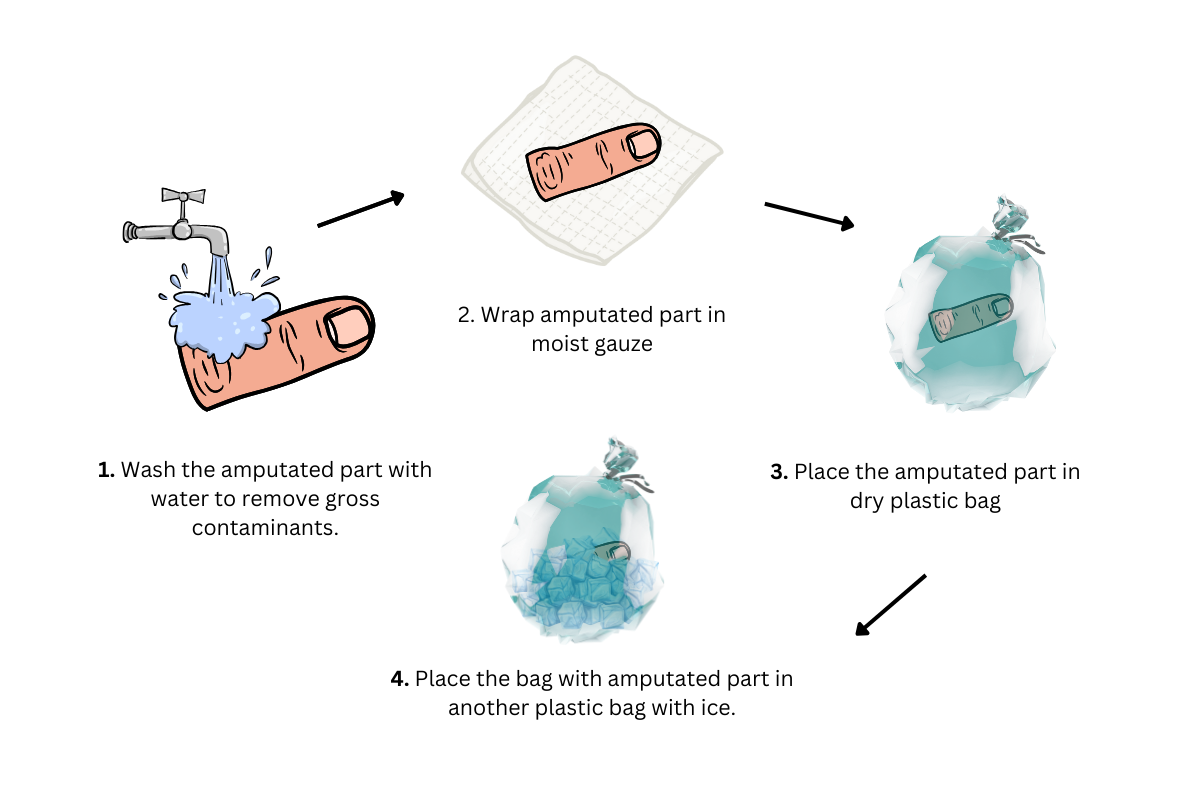The Science Behind Replantation: Restoring Amputated Digits
The world of medical science is a realm of constant innovation and life-changing breakthroughs. Among these marvels, replantation surgery stands as a testament to human ingenuity and the unwavering dedication of medical professionals like Dr. Nilesh Satbhai.
This remarkable field of surgery is responsible for reattaching amputated digits, offering patients a chance to regain what was once lost. In this comprehensive article, we will delve into the intricate science behind replantation surgery, exploring the processes, challenges, and the life-changing impact it brings.
The Mystery of Amputation
What Happens in an Amputation?
An amputation is a traumatic event that involves the loss of a part of the body. It can occur due to a variety of reasons, such as accidents, trauma, or medical conditions. During an amputation, the affected body part is severed from the rest, leading to a sudden and often devastating change in one’s life.
Causes and Consequences
Amputation can be caused by accidents, including workplace mishaps, car crashes, and severe injuries. It can also result from medical conditions such as diabetes, vascular diseases, or cancer. Regardless of the cause, the consequences of amputation are profound. It not only affects physical abilities but also takes an emotional toll on the individual.
The Emotional Toll
The emotional impact of amputation is substantial. It can lead to feelings of loss, grief, and a sense of identity crisis. Coping with the change in physical appearance and abilities can be challenging. However, the prospect of replantation surgery offers hope and a chance for a new beginning. Here are some things you should note to preserve the amputated part before you reach the doctor.
- Wash the amputated part with water to remove the gross contaminants.
- Wrap the amputated part in moist gauze
- Place the amputated part in a dry plastic bag
- Place the bag with an amputated part in another plastic bag with ice.

Steps to be taken to preserve amputated finger
The Marvel of Replantation
Replantation surgery is nothing short of magic in the medical world. It involves reattaching severed body parts using microsurgical techniques, giving patients a second chance at a normal life. The intricate procedures and skilled hands of surgeons like Dr. Nilesh Satbhai are instrumental in making this magic happen.
Replantation surgery has the power to transform lives. Patients who undergo successful replantation can regain lost functionality, dexterity, and a sense of normalcy. This surgical marvel not only restores physical abilities but also helps individuals regain their self-esteem and confidence.
The Surgical Marvels
Going Under the Knife: A Closer Look at Replantation
Replantation surgery involves several intricate procedures, each playing a crucial role in restoring amputated digits. These procedures include microvascular surgery, nerve and tendon repair, and vascular anastomosis.

News Paper Clipping about advancements in plastic surgery
Microvascular Surgery: A Tiny Miracle .
Microvascular surgery is the foundation of replantation. It involves reconnecting tiny blood vessels under a microscope. This delicate procedure ensures that blood flow is restored to the amputated digit, allowing it to survive and heal.
The Nerve and Tendon Symphony
Nerve and tendon repair are vital components of replantation surgery. Surgeons meticulously suture damaged nerves and tendons, enabling the reattached digit to regain sensation and function.
Blood Vessels Reconnected: A Surgical Ballet
Vascular anastomosis is a critical step in replantation surgery. It involves the precise reconnection of arteries and veins, ensuring a steady blood supply to the reattached digit. Without this surgical ballet, the digit would not survive.
One of the critical factors in the success of replantation surgery is the timing of the procedure. Replantation must be performed as soon as possible after the amputation to maximize the chances of success. The race against time begins the moment the injury occurs.
Restore Cut-Off Digits with Replantation Surgery
Inside the Operating Room
The Life-Changing Moment: Surgery Begins
The replantation surgery journey starts in the operating room, where skilled surgeons like Dr. Nilesh Satbhai work their magic. Let’s take a step-by-step look at what happens during the surgical procedure.
Step 1: Removing the Damaged
The first step is to remove any damaged tissue and prepare the amputated digit for reattachment. This process ensures that the digit is in the best possible condition for a successful replantation.
Step 2: Reconnecting the Blood Highways
Once the damaged tissue is removed, the surgeon meticulously reconnects the arteries and veins of the amputated digit. This step is crucial to reestablish blood flow.
Step 3: Reuniting Nerves and Tendons
Nerve and tendon repair come next. Surgeons delicately suture the damaged nerves and tendons, working with precision to restore sensation and function.
The duration of replantation surgery varies depending on the complexity of the case. It can take several hours to complete, during which the patient is under anaesthesia.
After the Surgery
After the surgery, patients wake up to a world that holds both hope and challenges. Immediate post-operative care is critical to ensure a successful recovery.
Managing the Wound
Careful wound management is essential to prevent infection and promote healing. Dressings are applied, and the surgical site is monitored closely.
Keeping Things Still: Immobilization and Splints
To protect the reattached digit, patients may need to wear splints or casts to immobilize the area. This helps in minimizing stress on the surgical site during the early stages of recovery.
The Road to Recovery: Rehabilitation and Therapy
Rehabilitation plays a significant role in the recovery process. Physical therapy and occupational therapy help patients regain strength, mobility, and functionality in the reattached digit.
Keeping an Eye Out For Potential Complications
While replantation surgery offers hope, it’s not without its challenges. Patients and healthcare providers must remain vigilant for potential complications such as infection, rejection, or impaired blood flow.
Setting Realistic Expectations
The Aftermath: What Patients Can Expect
Recovery from replantation surgery is a journey that requires patience and determination. Patients need to set realistic expectations and be prepared for both progress and setbacks.
Dealing with Challenges
The road to recovery may involve challenges such as pain, swelling, and stiffness. Patients need to communicate openly with their healthcare team to address these issues effectively.
Recovery is a gradual process, and it can take several months to see significant improvements. However, with dedication and hard work, most patients can regain a high degree of functionality in the reattached digit.
Facing Complications Head-On
While replantation surgery offers hope, it’s important to understand that for amputations above the wrist level, if the replantation is not done or if it fails, secondary reconstruction becomes very difficult. Prosthetic rehabilitation may not be a suitable alternative due to the complexity of the amputation. In such cases, the patient may need to consider a hand transplant, which is a much more challenging and complex option.
The decision to pursue replantation or alternative options should be made in consultation with a qualified medical team, taking into account the specific circumstances and individual needs of the patient. Complications can occur, but they are manageable with prompt medical attention, and exploring all available options is essential for the best possible outcome.
The Future of Replantation Surgery
The field of replantation surgery continues to evolve, with ongoing advancements in techniques and technology. The future holds the promise of even better outcomes for patients.
Researchers and surgeons, including Dr. Nilesh Satbhai, are continuously working to refine replantation procedures and improve success rates. Ongoing research aims to make replantation surgery more accessible and effective for patients worldwide.
In the world of medicine, replantation surgery is a shining example of human resilience, skill, and innovation. Dr. Nilesh Satbhai’s contributions to this field have transformed countless lives, offering hope where there was once despair. As we’ve explored the intricate science behind replantation surgery, we’ve gained insight into the journey from amputation to recovery. It is a journey filled with challenges, but it is also a journey of incredible hope and the restoration of what was lost. With ongoing research and advancements, the future of replantation surgery holds the promise of even brighter outcomes for those in need.






